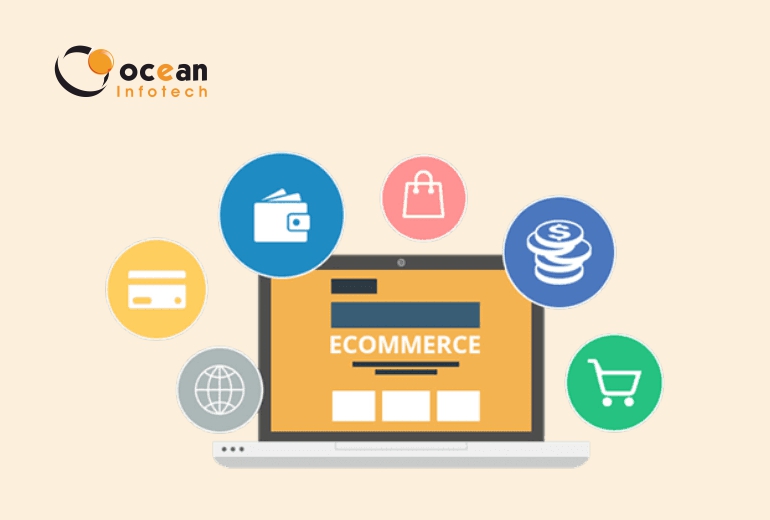In this industry, sharing specific tactics and strategies can be extremely useful. But today, we are choosing to step back and encourage to you develop a unique strategy for your own business. The following are ten steps you can follow to develop your strategy. This list is not exhaustive but can be used as a guide to identify gaps in the market. Unique Selling Proposition You've probably given your unique selling proposal a lot of thought if you are already building an e-commerce business. You will still need to refine this when you move from identifying the unique features of your product or market to how you can best market it. All three of the biggest e-commerce sites started with a USP that was clearly defined. Amazon began as an online bookstore. This was the USP that got them started. eBay has made waves by defining itself as a site to buy and auction unique items. Etsy has made its name because it only allows sellers to sell hand-crafted goods. Your USP should be at the heart of your marketing strategy. It is important to communicate your brand's uniqueness in the most impactful and concise way possible. It should be short and simple enough to fit into any marketing material you have access to, but also open enough to serve as the seed of your marketing strategy. Mission Statement While your mission statement is related to the USP of your company, it serves a completely different purpose. Your mission statement should be a driving force behind your brand and the values you want your customers to associate with it. What values would you like people to associate your brand with? What are your goals as a business, other than making revenue and turning a profit? Your mission statement is the driving force for your thought-leadership strategy. Whereas your USP drives your audience into becoming customers, your USP is the driving factor behind your thought leadership. The USP is more concerned with today's sales, while the mission statement is more concerned with building loyalty and ensuring future sales. Key Performance Indicators After you've chosen a USP and a mission statement that will serve as the foundation of your marketing strategy it's now time to think about the numbers you want most to measure. There are trade-offs that every business must make to optimize for each KPI. Amazon, for instance, focused almost exclusively on increasing revenue and much less on profit. Profit and revenue are obvious KPIs, but your ultimate goal should be to determine how well you live up to your mission and USP. Who will use your website or purchase your products? What makes this audience unique, and how would you locate them? What is unique about this audience, and where would you find them? What are the commonalities between your audience members? Is it more about a problem that they all share or a culture or set of values you want to appeal to? What else might your target audience find interesting? What are the cultures, issues, and areas of interest that are not directly related to your brand but that may be interesting to them? Knowing your audience will help you determine the best way to communicate with them, including what media, channels, platforms, and locations to use. Paid Marketing Channels Will you use paid marketing channels or only "organic" channels? Which channels will expose you most to your target audience? Will they be on Facebook and Instagram? AdSense can be used to target a specific search term that they are using. You can use inbound marketing to bring them to your website, and then remarketing ads will be used to lure them back. How will you evaluate the effectiveness of your paid-for marketing channels? Are you going to focus on brand awareness, conversion rates, revenue, or ROI? How much of your effort will you focus on the bottom of the sales funnel where rapid sales are most likely to occur? What percentage of your efforts will be devoted to the top, where you can spread awareness and begin the customer journey? Are you going to direct your audience to lead generation forms or sales pages? How integrated would you like your paid and inbound channels to be with each other? Although a consistent message is important, every business will have a different approach to paid marketing. Inbound Marketing Channels How will your inbound strategy look? What do you prefer: a large, but unfocused audience, or a smaller and more focused one? You will reach out to people in a variety of ways. Will you entertain them, help them solve their problems or spread your brand values? Are you interested in creating content that is a deep-dive, or are they more interested in visuals with high impact or short messages? What is your preference for building your brand through influencers, joining communities and causing controversy or being the "rebel" in an industry that stirs up the pot? Are you building your brand around expertise and thought leadership or on your target audience? What will motivate people to promote your brand on these free channels? Why is it in their best interest? Would you rather invest in attracting the attention of major publications and influencers, or building buzz with everyday customers and micro-influencers? Industry Platforms What are the places where businesses in your sector tend to get the most exposure? Which of these is best for your target audience and why? Do they get more exposure on the news or on social media sites like YouTube and Twitter, for example? What are they doing? What do they do? Consider your competitors and the platforms they use to reach their audiences. Also, consider which platforms are mentioning them in an organic way. You can use these platforms to find your audience and differentiate yourself in a positive way. Inter-Industry Platforms Inter-industry platforms, arguably the most overlooked way to reach your target audience, are places where people don't usually talk about or speak about your industry but still fit well with your brand and audience. If you run an e-commerce site that sells home improvement products primarily to single mothers, then it is in your best interests to not only focus on platforms within the home improvement sector but also to take advantage of other platforms such as parenting sites, DIY websites, Pinterest and mommy-vloggers. This strategy allows you to leverage your USP, and reach your audience where others can't. Lead Generation Strategy There are many ways to cultivate and generate leads, depending on the product you sell: You will need to decide how you intend to prevent your audience from leaving you. You can, for example:You may wish to consider the following metrics:
Target Audience :
E-Commerce SEO


How to Create an E-Commerce Marketing Plan
This is a necessity, as no two e-commerce brands are alike. The price will be the only thing that separates two otherwise identical brands, and one or both of them may end up going out of business, or losing the majority of their market share.
Let's discuss and work together for your project.
Just drop us line on info@oceaninfotech.co.in or just say HI in chat box, We would love to hear from you.

